Making a Pink Nightie
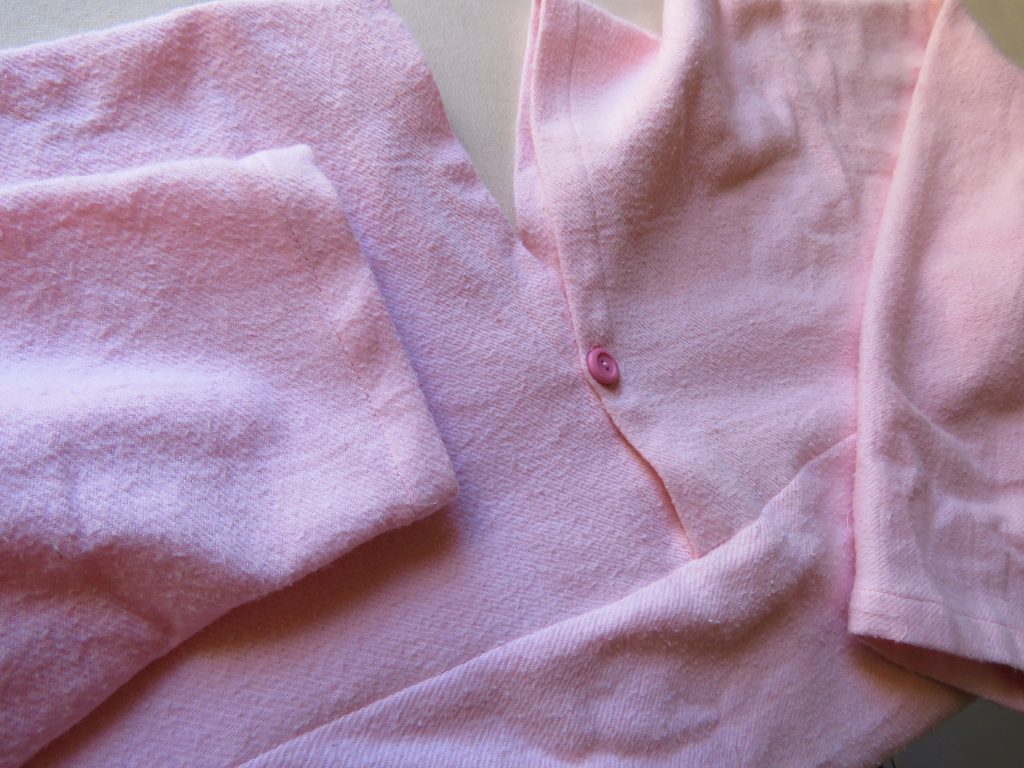
Believe it or not, it’s very rare that I sew something with no considerations other than personal choice. Usually my sewing consists of fit and photography samples, where things like colour, print, proportion etc all have to be deliberated.
As well, I have plenty of clothes and no need to make more, as I hardly ever get rid of things unless they’re totally worn out.
However, last week when I made a blouse from Birgitta Helmersson’s new book, I felt an unexpected frisson of excitement. I found myself looking forward to making something just for me!
Sleepwear is one thing that can be entirely one’s own, not subject to the whims of fashion, doesn’t need special underwear or the right shoes, can be any wild fabric, and doesn’t even have to use matching overlocker thread!
In need of winter nightwear, I sewed a long nightie this weekend. As I live in an old house, I feel I match the era of the architecture 🙂
For fabric, I used a pink flannelette sheet which I think came from Mr H’s Nana’s estate.
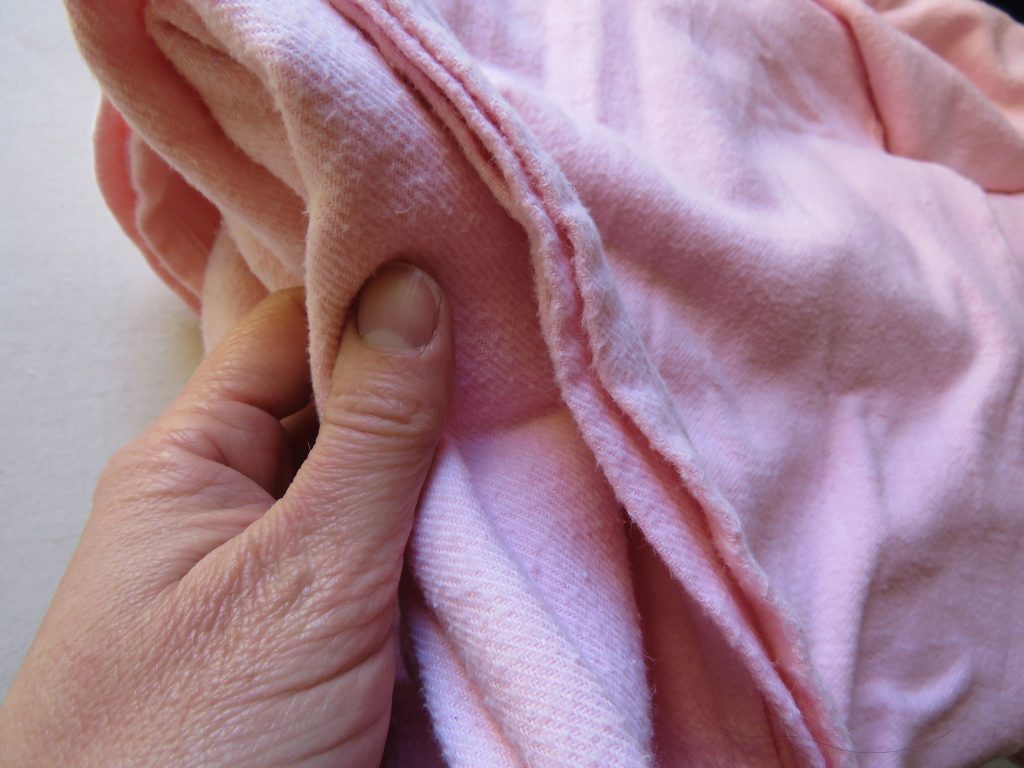
I’ve never used these sheets because there isn’t enough tuck-in at the sides. Maybe Nana didn’t either, as there are no thin patches in the middle. It’s been sitting with its pair in our linen cupboard for years, alongside another set in lilac.
For a pattern, I used the Eura dress, which is in the July zine of A Year of Zero Waste Sewing. This zine talks about using historical zero waste patterns, and Eura is a Viking/iron age pattern.
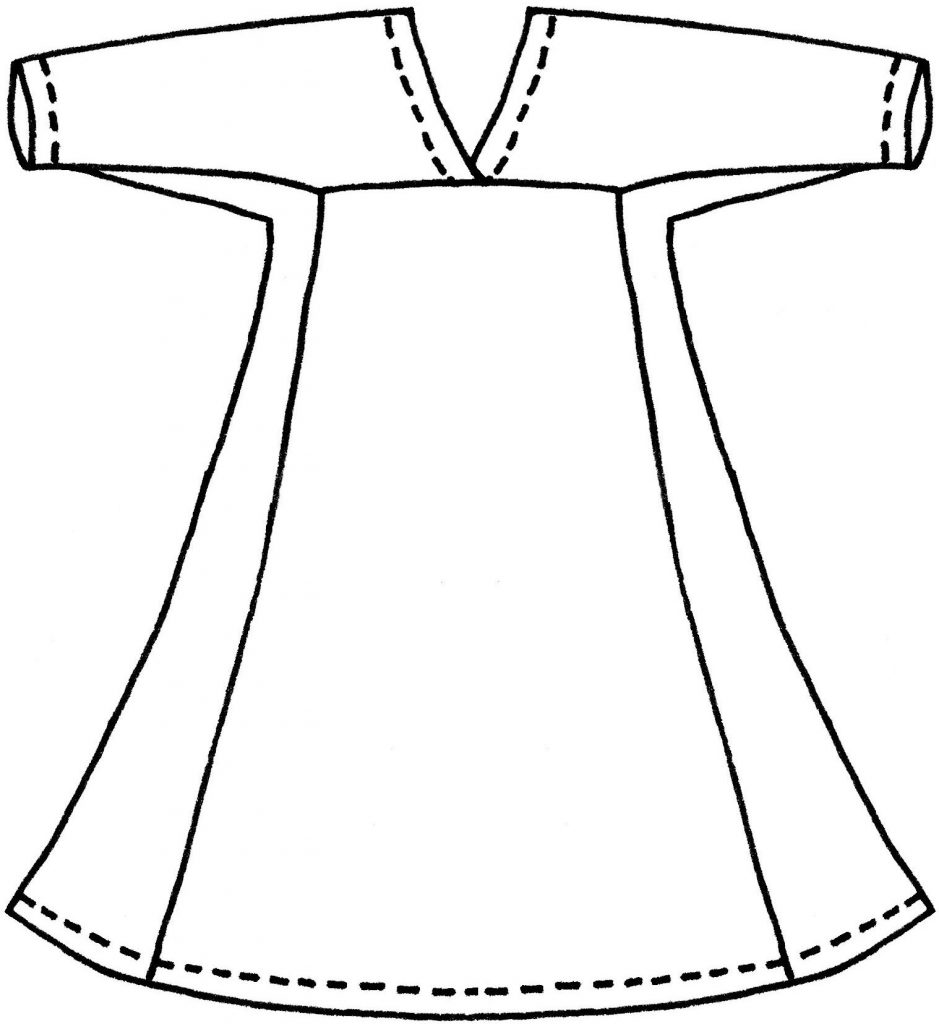
I’ve made this as a nightie before, in another sheet of Nana’s in white. I’ve worn it lots, to the point of patching it twice where the fabric has given way. I love how I feel when I wear it!
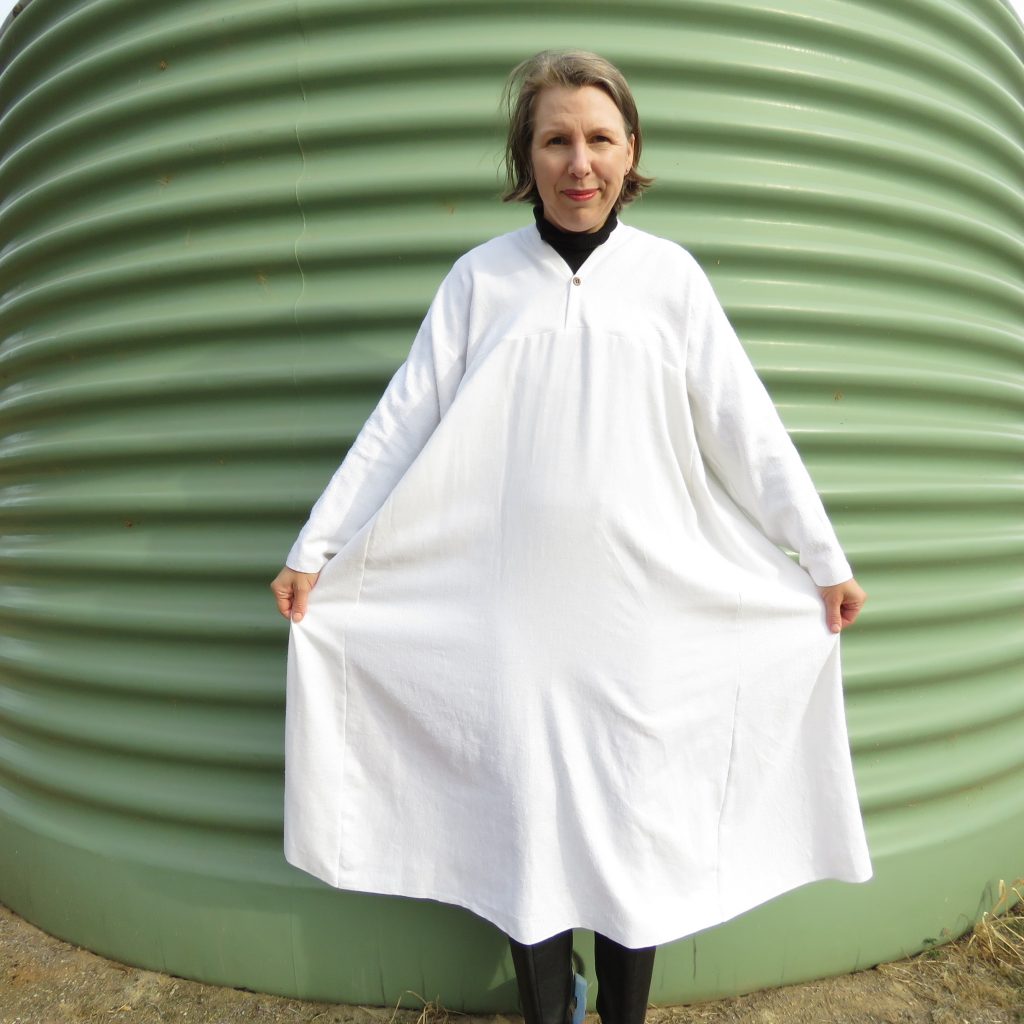
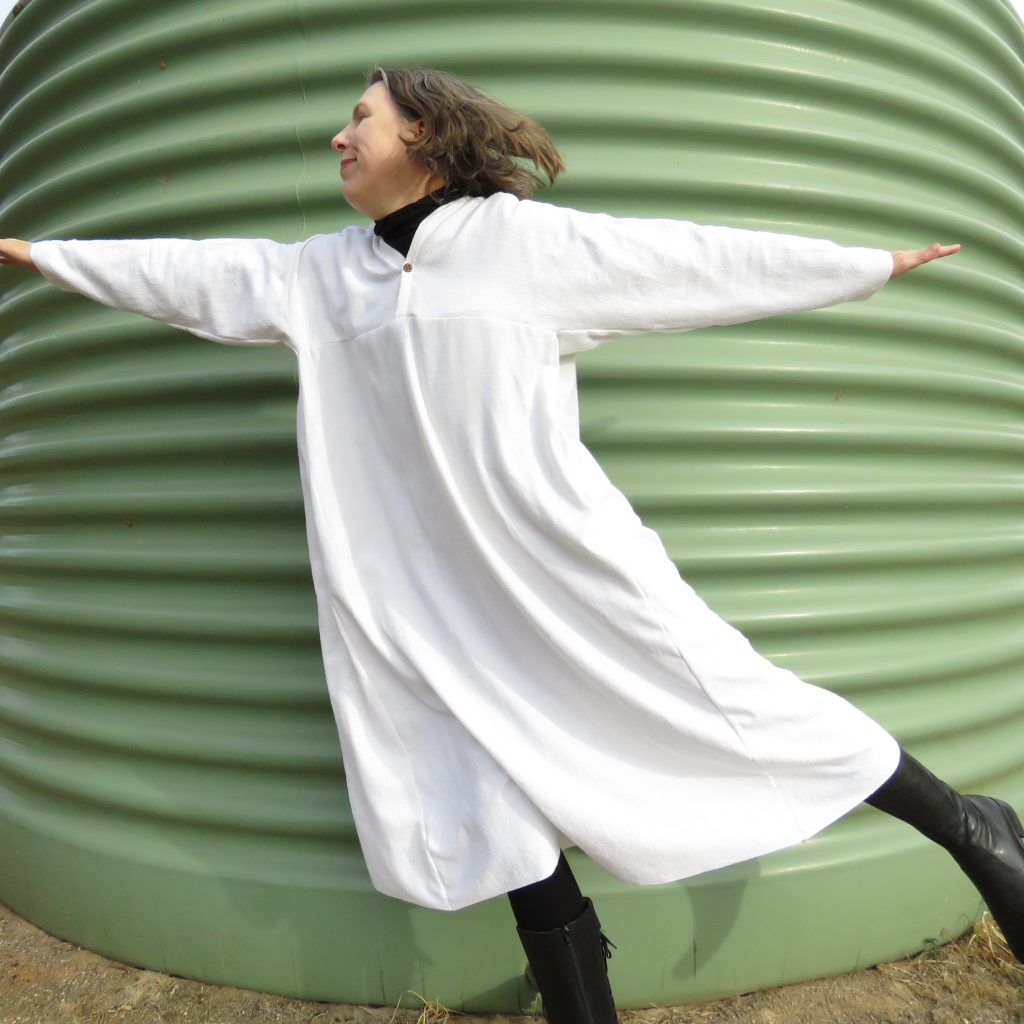

It’s a very quick pattern to mark out and cut. I can do it in literally 5 minutes. The whole cutting/sewing/setting up/packing away process took about 2.5 hours.
Here’s the zero waste layout. I kept the sheet’s selvedges.
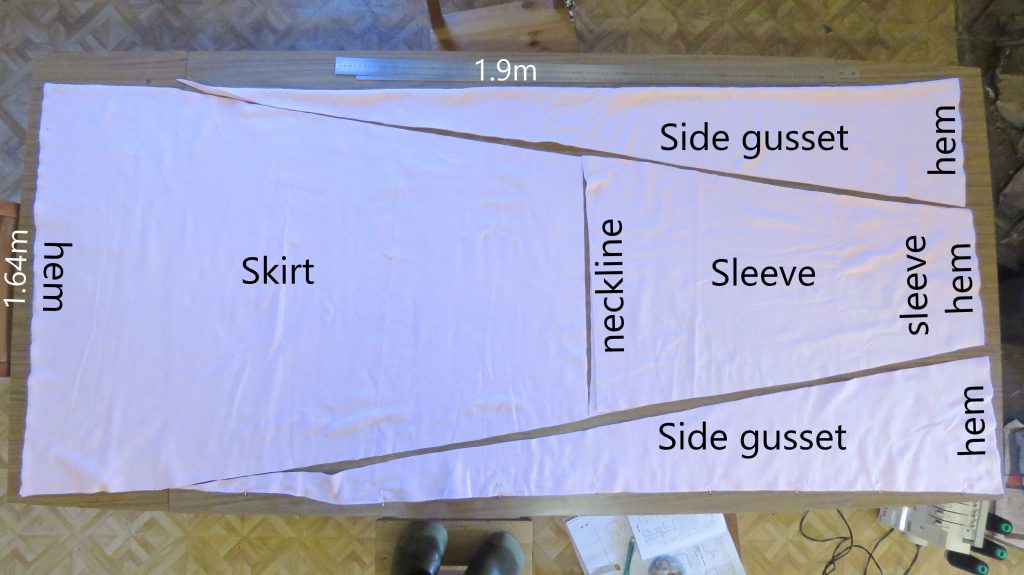
I made a floor-length nightie, with a single button at the front.
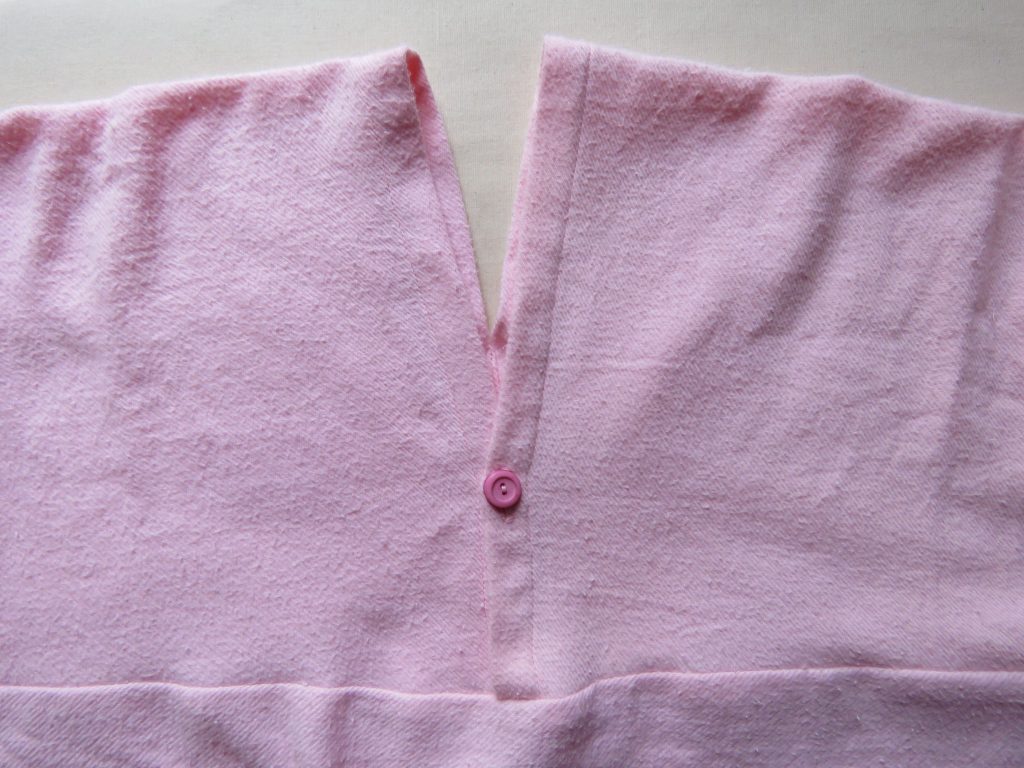
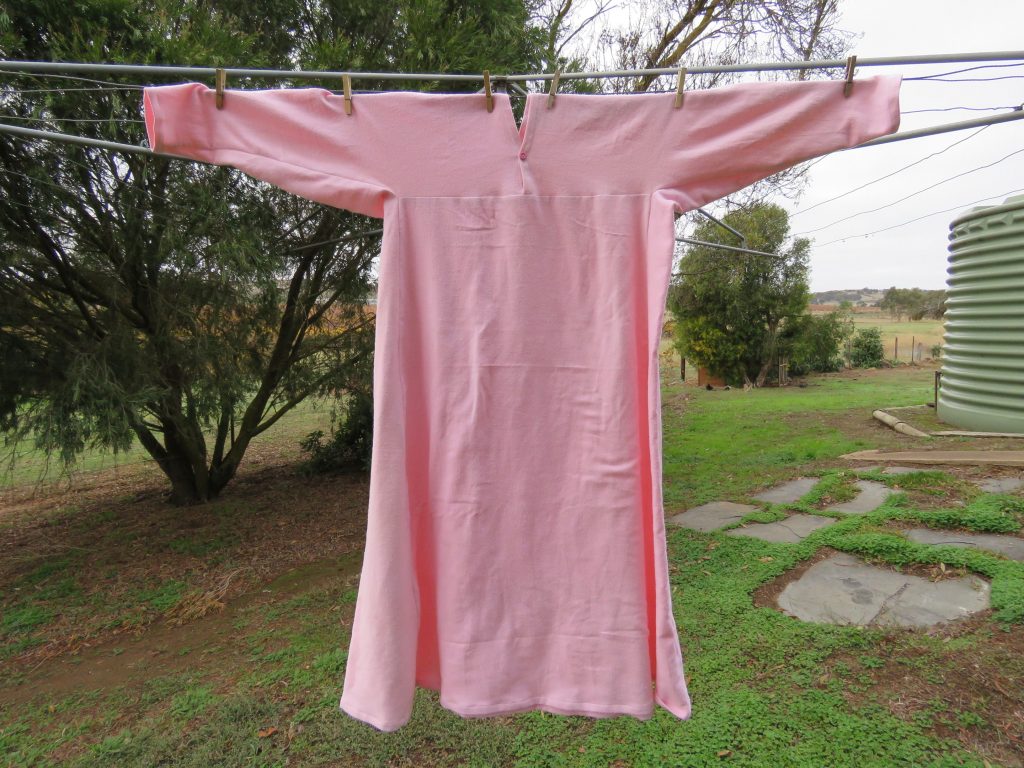
I know, it’s nothing special to look at, but I’ll feel cosy when I hop into bed!
Some links:
The July zine is available here for only $5 (+tax).
Emily of Empty Hanger patterns has played around with this cutting concept to make different dresses and a zero waste base layer top, and she gives single-sized patterns at the end if you want to try them.
Anita of Faro Studio has also made Eura dresses.
I talk about the Eura dress and two other historical patterns in this on-demand online course.
A pdf of Finnish historical costume including Eura, via the Viking Answer Lady.
Cheers!
Great idea! Having slept in my polar fleece jacket last night, making a Eura nightie out of flannel sheets looks very tempting. I also loved Emily’s first Eura dress — the black dress which I think she said represented everything she hates about zero waste pattern, including oversized and boring! I had a good laugh at our differences in taste: I definitely think it’s neither of those things.
There’s something cosy about sleeping in flannelette (and if your sheets happen to be flannelette too, there’s no way you’ll fall out of bed! Haha!).
I liked all of Emily’s dresses, including the black one – her versions are a great example of taking a zw historic pattern as a starting point and developing it into something entirely new.
It looks very cozy indeed, and how satisfying to use all the fabric.
I wore it to bed last night. It was bliss!
Wow! Enjoy your nightie. My favourite things to make are pyjama pants.
This pattern made in an interesting fabric or fabrics, could look great for day wear.
Many thanks Helen, fellow sleepwear sewing enthusiast. I’ve had some further reflections on sewing sleepwear: is it the autonomy that make sewing sleepwear so enjoyable, or that it’s usually fairly quick and therefore instant gratification?
I have (or rather, had) two Euras that are knee length with hoods and pockets for day wear, but my teen has taken them over.
I slept on pink flannelette sheets as a child (in a pink bedroom: Laura Ashley wallpaper and coordinating duvet cover and Mum-made curtains. I still have a wallpaper off cut lining a drawer). Very cosy but necessary in a Scottish winter.
The idea of sleepwear to match architecture is interesting… I should be in shoulder pads and leg warmers ( and probably something in between! Oversized shirt and ra-ra skirt perhaps). House built mid ‘80s.
I like your further thoughts on sleepwear/architecture – in the 80s I recall wearing floral flannelette pajamas in winter and in summer some sort of long t-shirt nightie with a print on the front, maybe Disney? (Wondering now if I should add a nightcap? House is 1850s with 1910 extension.)